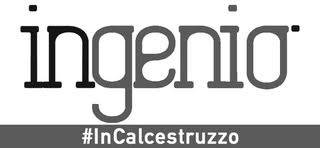Free in rete: Audel Complete Building Construction - 600 pagine dedicate alle costruzioni
The fifth edition of Complete Building Construction contains substantiallyrevised and expanded material to treat new developments.Some earlier material has been retained with slight modifications.Many of these changes are a result of environmental concerns, energyconservation, and increasing building and operating costs.The book’s objective is to provide in a single volume a compendiumof the best of current building design and constructionpractices, as well as information that is most useful to those whomust decide which building materials and what construction methodsto use. The emphasis is on the why of construction.Chapter 1, “Location of Structure on Site,” deals with subjectsrarely treated in books on residential construction: corner lots, nonconforming(grandfathered) lots, covenants, and how these affectthe location of a house on a lot. Zoning and setbacks are alsocovered.Chapter 3, “Foundations,” covers in detail different types of construction,methods of construction, and design of footings. The AirFreezing Index, degree days, and capillary break are topics newto this edition. The controversial issue of crawl space ventilationis discussed in detail, and current research is introduced. Waterproofing,dampproofing, as well as ground water management, arethoroughly covered. Coverage of permanent wood foundations andfrost-protected shallow foundations (common in Scandinavia, butrare in the United States) is included.Chapter 4, “Finishing and Curing Concrete,” provides the builderwith a good working knowledge of the properties and types of concreteand cements, as well as their proper handling and placement.The controversial issue of the right and wrong use of welded wirefabric is discussed.Chapter 7, “Woods Used in Construction,” provides comprehensivecoverage of plywood, strandboard, hardboard, engineeredlumber, and I-section joists. Adhesives, nails, and floor gluing are discussedin depth, as is exterior wall framing, in Chapter 10, “FloorFraming,” and Chapter 11, “Outer Wall Framing,” respectively.Chapter 16, “Windows,” includes low-E glass, heat mirror,switchable glazings, and Aerogels. Chapter 17, “Insulation,” providescomprehensive coverage of reflective insulations and the latestfindings on reflective barriers for use in attics. The use of cotton asinsulation is also covered.Chapter 18, “Interior Walls and Ceilings,” covers two productsrelatively new to the United States: Gypsonite and FiberBond.xxiiixxiv PrefaceArguments for and against attic ventilation are examined thoroughlyin Chapter 23, “Attic Ventilation.” Chapter 24, “Radon,” providesinteresting insight into this environmental hazard.It is hoped that you will find this new edition even more usefulthan the previous ones and that the information will help you tobuild more cost-effective and energy-efficient structures.Rex MillerMark MillerEugene Leger
The fifth edition of Complete Building Construction contains substantially revised and expanded material to treat new developments.
Some earlier material has been retained with slight modifications.
Many of these changes are a result of environmental concerns, energy conservation, and increasing building and operating costs.
The book’s objective is to provide in a single volume a compendium of the best of current building design and construction practices, as well as information that is most useful to those who must decide which building materials and what construction methods to use. The emphasis is on the why of construction.
Chapter 1, “Location of Structure on Site,” deals with subjects rarely treated in books on residential construction: corner lots, nonconforming (grandfathered) lots, covenants, and how these affect the location of a house on a lot. Zoning and setbacks are also covered.
Chapter 3, “Foundations,” covers in detail different types of construction, methods of construction, and design of footings. The Air Freezing Index, degree days, and capillary break are topics new to this edition. The controversial issue of crawl space ventilation is discussed in detail, and current research is introduced. Waterproofing, dampproofing, as well as ground water management, are thoroughly covered. Coverage of permanent wood foundations and frost-protected shallow foundations (common in Scandinavia, but rare in the United States) is included.
Chapter 4, “Finishing and Curing Concrete,” provides the builder with a good working knowledge of the properties and types of concrete and cements, as well as their proper handling and placement. The controversial issue of the right and wrong use of welded wire fabric is discussed.
Chapter 7, “Woods Used in Construction,” provides comprehensive coverage of plywood, strandboard, hardboard, engineered lumber, and I-section joists. Adhesives, nails, and floor gluing are discussed in depth, as is exterior wall framing, in Chapter 10, “Floor Framing,” and Chapter 11, “Outer Wall Framing,” respectively.
Chapter 16, “Windows,” includes low-E glass, heat mirror, switchable glazings, and Aerogels. Chapter 17, “Insulation,” provides comprehensive coverage of reflective insulations and the latest findings on reflective barriers for use in attics. The use of cotton a insulation is also covered.
Chapter 18, “Interior Walls and Ceilings,” covers two products relatively new to the United States: Gypsonite and FiberBond. Arguments for and against attic ventilation are examined thoroughly in Chapter 23, “Attic Ventilation.” Chapter 24, “Radon,” provides interesting insight into this environmental hazard.
It is hoped that you will find this new edition even more useful than the previous ones and that the information will help you to build more cost-effective and energy-efficient structures.
Rex Miller
Mark Miller
Eugene Leger
Il LINK dove lo abbiamo trovato: http://www.scribd.com/doc/131941884/Audel-Complete-Building-Construction#download
